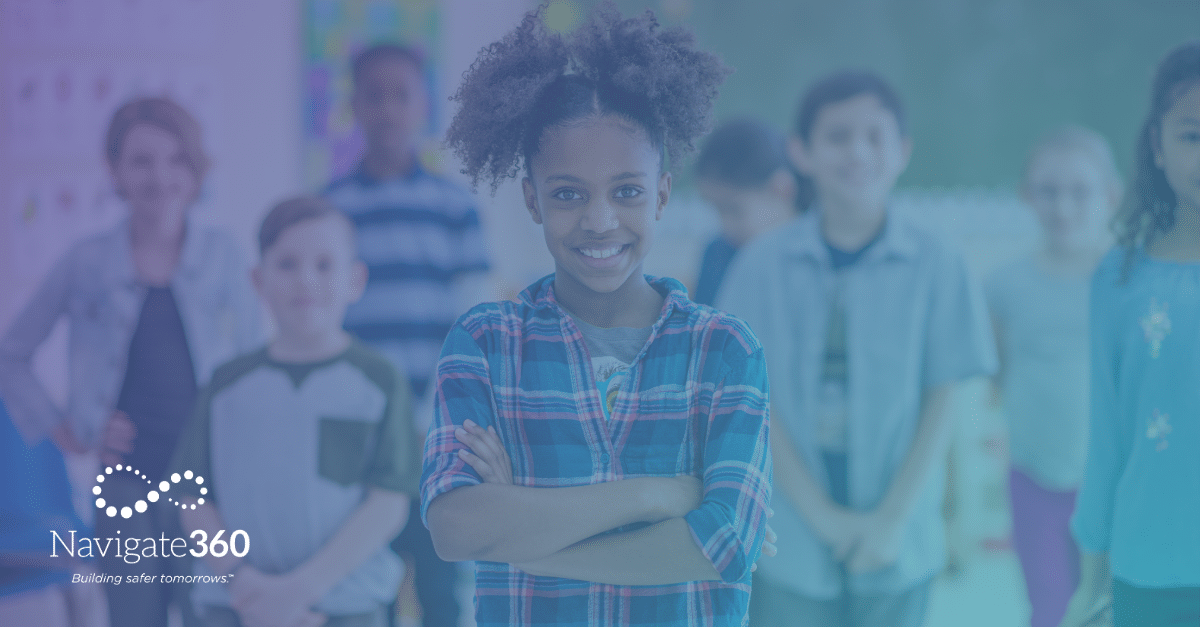Social-emotional learning, or SEL, is the backbone of school climate, student culture, and academic success, and yet it can be difficult to properly administer. For a social-emotional learning curriculum to provide maximum impact, it must meet the needs of students in a developmentally appropriate way. Your options for providing this crucial element are numerous, and it’s important to make the best possible choice for your students.
The Core Competencies of Social-Emotional Learning
The Collaborative for Academic, Social, and Emotional Learning (CASEL) identifies five core competencies involved in social-emotional learning:
- Self-Awareness
- Self-Management
- Social Awareness
- Responsible Decision-Making
- Relationship Skills
Each of these five competences are interdependent, allowing individuals to develop qualities that lead to successful, productive, and healthy lives. A social-emotional learning curriculum provides specific instruction in each of these competencies, building skillsets as students grow and mature. SEL impacts classroom climate, school culture, family-school partnerships, and community connections.
Choosing an SEL curriculum is critical to building great school climate, as well as a positive work environment for your staff. When reviewing options, it’s best to examine how well the curriculum serves students, staff, and families. Each of these stakeholders will reap the benefits of a well-chosen SEL curriculum.
What to Look for When Choosing a Social-Emotional Learning Curriculum
Effective SEL programs enable students to develop and practice core social and emotional skills. These skills will help them to manage their emotions and positively relate to others. As such, it’s important to consider these factors when choosing a social-emotional learning curriculum:
Backed by Science and Research
An effective SEL curriculum includes developmentally appropriate lessons and materials developed by former educators. There is an extensive body of research available regarding SEL skills development. This research, combined with the expertise of former educators, can form the foundation of a powerful SEL curriculum.
Interactive, Engaging Lessons for Students
SEL instruction shouldn’t be dry and dull. Today’s learners respond well to interactive lessons that give them the opportunity to develop, practice, and master new skills. Active forms of learning that define and target specific skills can be powerful in helping students achieve mastery.
Lesson Guides
The pace of learning may vary from student to student. Lesson facilitation guides can provide educators with actionable ideas for activities aligned to the lesson content. Differentiated instruction around the same SEL lesson, as outlined in a lesson guide, can help all students to develop necessary SEL skills.
Lessons for Educators
Providing lesson content for educators that coordinate with student lessons can help educators dig further into topics with their students. This can foster deeper discussions, better understanding, and better mastery of SEL skills as students move through the curriculum. Additionally, look for content that helps educators with their own social-emotional needs, helping to prevent burnout.
Family Lessons
One important component that is often overlooked is the extension of SEL lessons beyond campus boundaries. Including families through SEL lessons and materials that reflect what students are learning can help encourage SEL at home. Connecting school and home in this way will encourage family support of your SEL program.
As you evaluate a social-emotional learning curriculum based on these factors, consider its alignment with your school’s needs and desired outcomes. The best SEL curriculum for any school is one that supports the school’s priorities, provides a sequenced format to build on lessons over time, and allows the school to assess the effectiveness of the program.
Navigate360 Offers a Social-Emotional Learning Curriculum for Students, Staff, and Families
Fortunately, you can provide social-emotional learning for all stakeholders with Suite360, a powerful SEL solution offering evidence-based lessons for all. Three SEL solutions – Suite360 for Students, Suite360 for Staff, and Suite360 for Families – provide social-emotional learning for students with companion content for the adults in their lives.
Suite360 for Students includes more than 500 scaffolded lessons for grades PK-12, engaging students at every level in a format they can understand. Lessons are web-based and mobile-friendly and cover a wide variety of topics relevant to today’s students. The digital curriculum makes it easy for schools to track and assess the program’s effectiveness and make adjustments based on comprehensive reporting.
Suite360 for Staff enables staff to better support students through emotional wellness and professional development curricula specifically for staff. The program positions staff to help support students with guidance, culturally informed lessons, and relevant content. Additionally, the lessons provided through this program teach staff to care for their own social-emotional and mental health.
Suite360 for Families provides a powerful connection between school and home. Families receive lessons related to what students learn in school, providing an avenue to continue the conversation at home. The library of family lessons enables families to connect with their students on topics that are relevant to their experiences, furthering their social-emotional growth.
Suite360 is a comprehensive social-emotional learning curriculum that helps to magnify the impact of small positive actions for students, staff, and families. SEL can affect school culture and climate, enabling students to grow not only socially and emotionally but also academically, as well. Let us help you create a more respectful and inclusive school community via social-emotional learning with Suite360 – contact us to learn more!




